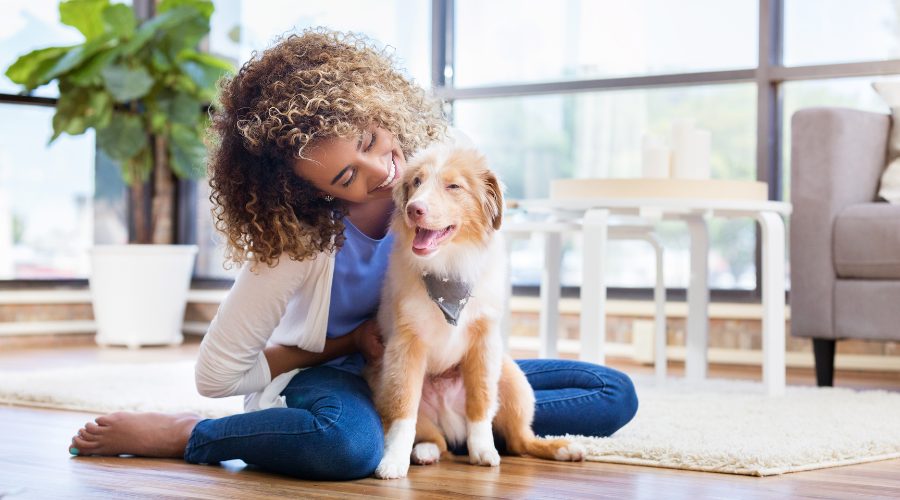When it comes to having pets, about 70% of U.S. households have at least one. Millennials make up the largest percentage of current pet owners, followed by baby boomers and Gen X.
And you probably won’t be surprised to learn that dogs are the most popular pet in America, followed by cats and then fish.*
Maybe you are looking for a furry friend to add to your household. Before bringing your new fur baby home, there are several things you might want to do to ensure this transition goes as smoothly and stress free as possible.
Here are a few simple ways to make that happen:
Prep Your Home –
Before bringing a new dog or cat into your home, you might want to first assess your space and figure out if there are any potential safety issues. A rambunctious pup won’t understand that your grandmother’s priceless vase should be handled with care. Puppies can be clumsy and dogs of all ages may have a wagging tail that makes contact with something breakable.
Secure anything fragile that might be at a level where your new dog can find it. And make sure to lock away medications, cleaning supplies, and other items that might be have tempting smells but dangerous effects.
Get Supplies to Make Your New Friend Comfortable –
Next, you’ll want to gather a few supplies for your new furry friend. Don’t feel like you have to break the bank. An appropriately sized bed, food and water bowls, dog food, and a chew toy or two will do to start.
Adopting from a shelter? Maybe you’ve chosen to bring a senior dog into your home. Consider that he or she might have a few special needs that you’ll want to make accommodations for. Does your new dog need any special medications? Are there any special dietary requirements? Do the prep work ahead of time so when your new furry friend comes home, you can spend as much time together as possible.
Make Sure Have Pet ID Ready-
Nobody wants to lose a beloved pet, but things can happen. Minimize the risk by making sure your dog has appropriate identification. Collar and id tags are the minimum. Some pet owners also opt to have their pets microchipped. This is where a small chip, the size of a grain of rice, is implanted under your dog’s skin. It’s contains contact information that you put into a database and most vet offices and shelters have microchip readers.
Something else to consider is a GPS pet tracker. This is a device typically worn on the dog’s collar. You sync it up to your computer or smartphone and can always know your pet’s whereabouts. Some form of identification will go a long way towards helping your pet find his way home if lost.
Be Prepared For Some Challenges-
Any change can have challenges and this includes getting a new dog or cat. Perhaps your new bundle of fur is a completely untrained pup who needs lots of guidance about when and how to use the bathroom. Or maybe your new cat is feeling some anxiety in their new surroundings. This is completely normal. Just keep this in mind and remember to have lots of patience during the process of getting acclimated to each other.
Establish “Bathroom” & Exercise Routines-
No matter the age of your new dog or cat, it’s important to establish bathroom and exercise routines. Taking your dog out at regular times can help them learn a healthy bathroom routine quickly. Having a plan for a litterbox or outside time is crucial to welcome a cat or kitten into your space.
And getting enough exercise is important for dogs of all ages. You can reinforce these routines by providing your pup with a little reward for completing her task.
These are just a few ways you make sure your new dog adjusts to her new home and family as easy as possible. Good luck with your newest family member!




 Facebook
Facebook
 X
X
 Pinterest
Pinterest
 Copy Link
Copy Link






